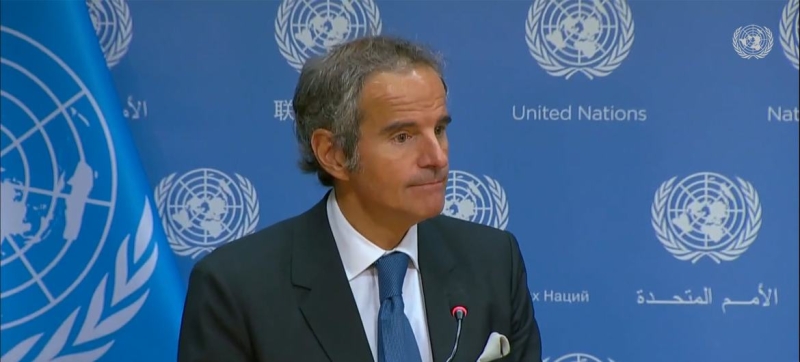
IAEA Director General Rafael Grossi. Archive photo IAEA chief in Kyiv: focus on energy, nuclear safety Peace and security
IAEA Director General Rafael Mariano Grossi met with Ukrainian President Volodymyr Zelensky in Kyiv on his “11th visit to the country since the start of the military conflict almost three years ago.” Grossi said in a statement on Thursday that he was visiting Ukraine in the context of efforts to help prevent a nuclear accident.
Visit to Ukraine
The Director General of the International Atomic Energy Agency (IAEA) is visiting Ukraine to assess the damage to key electricity infrastructure that is critical to the country’s nuclear safety. Before meeting with President Zelensky and senior government officials, Grossi visited one of the substations that supplies Ukraine’s nuclear power plants with electricity, which is needed, among other things, to cool their reactors.
Nuclear Power Plants Reduce Power Output
In recent months, Ukraine’s operating nuclear power plants – Khmelnytskyi, Rivne and Yuzhno-Ukrainskaya – have been forced to reduce their power output several times due to large-scale military actions affecting the state of the power grid, of which the substations are a key part. Most recently, Ukraine informed the IAEA that on February 1, the plants temporarily reduced their output before returning to nominal power.
Threat of accidents
“The reason this is so important, from the IAEA’s point of view, is that this situation has implications for the safety of nuclear power plants,” Director General Grossi told reporters at the substation, one of several facilities damaged in recent months. “This jeopardizes the nuclear safety of the power plant and could ultimately lead to an accident,” he added.
“Degradation” of Some substations
IAEA teams visited nine different electrical substations across the country that are considered critical to nuclear safety and security, including the one visited by Director General Grossi on 4 February. During visits to a number of substations in September, October and December 2024, IAEA experts noted “continued degradation” at some of the sites.
“The situation is quite serious. We should not, I think, hide this fact. And as you can see behind me, the infrastructure has deteriorated,” said Director General Grossi, speaking in front of a “damaged autotransformer.”
Director General Grossi outlined what the IAEA is doing at this and other Ukrainian substations to help “maintain the stability of the grid,” for example by replacing damaged transformers.
Purchasing equipment from Bulgaria
In meetings with President Zelenskyy, Foreign Minister Andriy Sybiha and Energy Minister Herman Galushchenko, Director General Grossi also discussed progress on Ukraine’s plans to procure equipment from Bulgaria’s aborted Belene NPP project for new reactor units under construction at the Khmelnytskyi NPP.
The IAEA is providing technical support and advice on nuclear safety to help implement this plan, Director General Grossi said.
Military activity near nuclear power plants
At Ukrainian NPPs, IAEA teams based there have continued to report “signs of military activity” near the sites over the past week, repeatedly raising concerns about potential nuclear safety risks.
At Zaporizhzhya NPP in In Ukraine, the team heard several explosions over several days, some very close to the plant. There were no reports of damage to the facility.
Power Line Outages
From January 29 to February 1, the only 750-kilovolt power line at Zaporizhzhya NPP was out of service. There are now two external power lines, including one at 330 kV. Before the conflict escalated in 2022, there were 10.
IAEA teams at the Khmelnytskyi, Rivne, and South Ukraine NPPs and the Chernobyl site continued to report air raid sirens daily. Teams in Khmelnytskyi, Southern Ukraine and Chernobyl were also informed of drones being spotted near the sites.
A 750 kV power line at the South Ukraine NPP remains unavailable after being shut down on January 29 due to military action.
